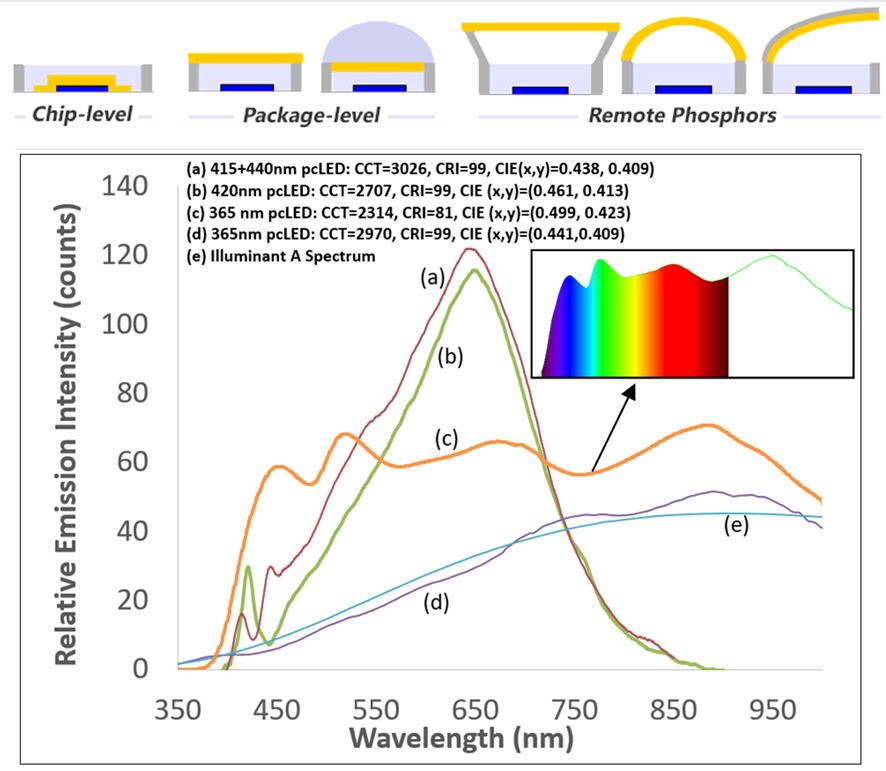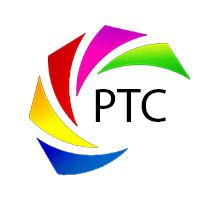Full Spectrum, Sun-like Lighting, and Reference Illuminant Standards
Phosphors can be used to deliver full spectrum lighting using narrow-band excitation sources such as UV mercury lamps, lasers, or LEDs. Although blue LEDs or lasers are commonly used as phosphor-excitation sources in solid-state lighting (SSL), the resulting spectra from blue sources will always be deficient in the high energy (violet and near-UV) regions. In order to achieve full spectral coverage and more flexible color tuning, one or several near-UV or violet sources are needed. For example, full spectrum and ultra-high color rendition (CRI~99) lighting can be achieved using various phosphors combined remotely or on-chip with one or more near-UV LEDs.
In the below figure, graph (a) shows a warm white (CCT=3026K; CRI=99) spectrum achieved using three different phosphors and two LEDs at 415nm and 440nm. Similarly, graph (b) shows how a warm white pcLED (CCT=2707K; CRI=99) is also possible using a single excitation source at 420nm. On the other hand, graph (c) shows a full spectrum lamp extending from near-UV to near-IR (NIR) that was achieved using 365nm LEDs and five different phosphor systems. Finally, graph (d) shows how near-UV LEDs can be used with various phosphors to create a spectral power distribution comparable to the standard Illuminant A spectrum (from traditional tungsten filament bulbs), which is widely used to calibrate a range of spectroscopy and optical instrumentation.
A combination of LEDs and phosphors can potentially be used as solid-state replacements for all traditional standard illumination sources including Illuminants A, B, C, D (D50, D55, D65, D75), even Illuminant E. The examples shown below were achieved using phosphor-converted LED technology from PhosphorTech.

Top: customized phosphor films can be applied to existing single- or multi-color LED devices using different configurations and fabrication methods. Bottom: examples of various remote phosphor LEDs tailored to emit across the near-UV, visible, and near-infrared parts of the spectrum.
